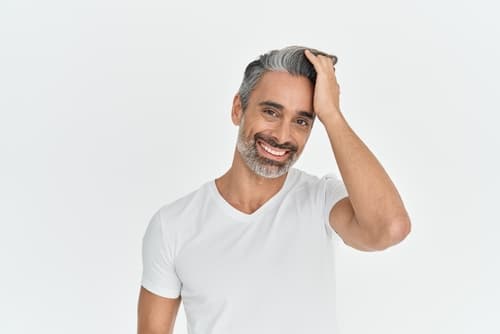
Teeth change with age, just like the rest of the human body. Even if you once wore braces, your teeth can move during adulthood. Anyone who undergoes orthodontic treatment knows they must wear a retainer to keep teeth in the correct places, so it makes sense there could be age-related dental changes to manage, starting even before middle age. Orthodontics can be the solution.
Problematic Dental Changes That Call for Orthodontics
Oral health can be severely affected if teeth move too much or in the wrong ways. Some of the biggest complaints orthodontists hear from adults about changing teeth include both cosmetic and functional issues:
- Crowding
- Gaps
- Bite misalignment
- Short teeth
- Long teeth
- Changing shape
If You Have Crowding or Gaps
Aging can cause upper teeth to form gaps and cause lower front teeth to crowd. There is a good chance you’re getting food stuck in annoying new places, having trouble biting, or experiencing alignment problems because of tooth movement. Anyone with any stage of gum disease may also have teeth that separate over time. Any loss of permanent teeth will also affect smile structure. None of these issues resolve themselves.
Bite Misalignment Could Be to Blame
Bite problems can worsen in adulthood, especially for people who did not get recommended orthodontics as a teen, or perhaps who understand Phase 1 braces for kids then did not do anything else to align your smile. Sometimes the problem of misalignment isn’t clear until you experience serious side effects, like a deep overbite.
The Problem with Tooth Size and Shape
If you’ve heard the saying, “long in the tooth,” you may recognize this phenomenon in yourself as you age. Your teeth aren’t growing, but rather the gum tissue recedes over time and reveals more of the tooth. Your teeth then look longer than they once were.
There is also the opposite problem of short teeth, and this can come from normal wear and tear over decades. The enamel begins to break down, making teeth look smaller. Both long and short teeth are compromised in size and length.
Signs of Age-Related Dental Changes
If you aren’t sure what’s going on with your teeth but sense that something isn’t right, look for the following signs:
- Visible crowding
- Growing gaps between teeth
- Shredding dental floss
- Food caught in unusual areas
- Difficulty biting
- Poor-fitting retainer
- Gum recession
Choose Orthodontics to Correct Aging Teeth
The great news is most of the problems mentioned here can often be corrected with customized braces treatment or Invisalign for adults. All that’s needed is to get to the orthodontist and ask for an evaluation to determine what’s possible within your comfort level, budget, and lifestyle.
To keep your mouth from experiencing serious dental changes that call for orthodontics, get regular dental cleanings and exams for gum disease, get a nightguard if you grind your teeth when sleeping, replace missing teeth right away, and don’t stop wearing that retainer.
You can take great care of your teeth, but that doesn’t mean they’ll stop moving. Get support and intervention to protect your oral health from Lawrenceville Orthodontics in Lawrenceville and Philadelphia. Contact us to make an appointment.
